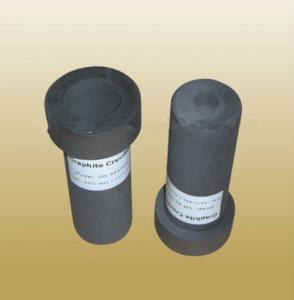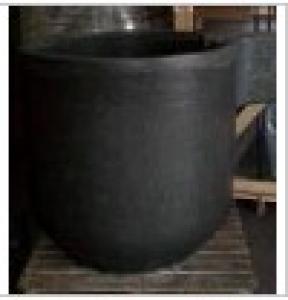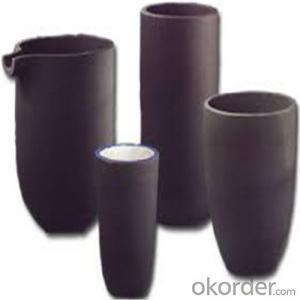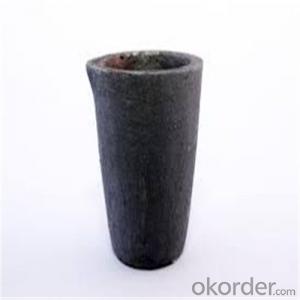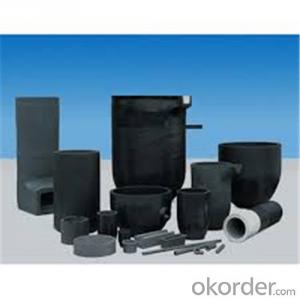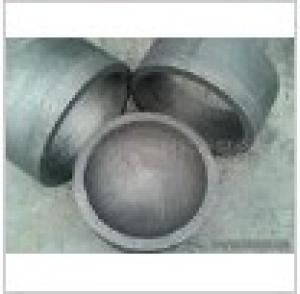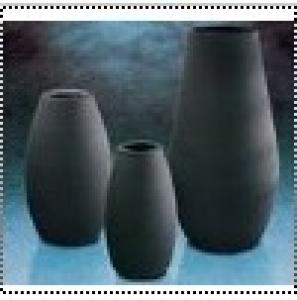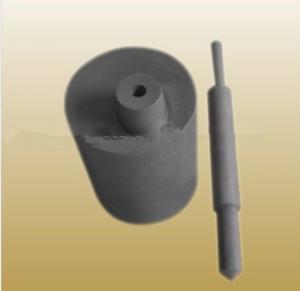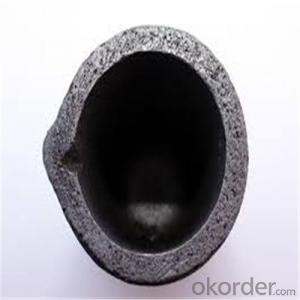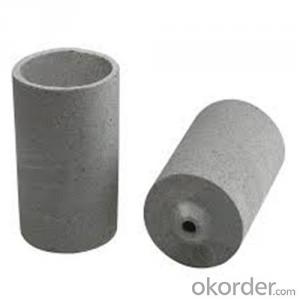100 oz Kerr Graphite Crucible - Tempering A Graphite Crucible
- Loading Port:
- China Main Port
- Payment Terms:
- TT or LC
- Min Order Qty:
- 50 Pieces pc
- Supply Capability:
- 10000 Pieces per Month pc/month
OKorder Service Pledge
Quality Product, Order Online Tracking, Timely Delivery
OKorder Financial Service
Credit Rating, Credit Services, Credit Purchasing
You Might Also Like
Detailed Product Description
Graphite melting crucible
Metal type : gold , silver and brass & copper
3 Kilos melting capacity
Kerr electro melt oven
Graphite Crucible 3 Kilos, Fits Kerr Electric Auto Furnace
Item Description
-
Graphite Crucible 3 Kilos, Fits Electric Auto Furnace.
-
This is a new Graphite Crucible designed for the Hand held Melting Furnace.
-
Can be used for all metal types, like gold ,silver,copper etc.
-
This model has the groove in the top for the wire type crucible tongs.
-
Measurements :
-
Top outside diameter (mm) : 102mm
-
Top inside diameter (mm) : 85 mm
-
Height with the top (mm) : 125mm
- Q: Can a graphite crucible be used for melting carbon-based materials?
- Yes, a graphite crucible can be used for melting carbon-based materials. Graphite is an excellent conductor of heat and has a high melting point, making it suitable for high-temperature applications like melting carbon-based materials. Additionally, graphite crucibles have good chemical resistance to withstand the corrosive nature of carbon-based materials during the melting process.
- Q: Graphite is widely used in industry and in daily life. It can not be used in industry
- General graphite in industry and daily life has been used in various fields, but the graphite can not be used by those who industry is a matter to be determined, so we can only go to research specific, what is the specific application of graphite materials, if you don't want to in the industry application of graphite material
- Q: Are there any specific cleaning agents or methods recommended for graphite crucibles?
- Yes, there are specific cleaning agents and methods recommended for graphite crucibles. Graphite crucibles should be cleaned using a mixture of water and potassium nitrate or hydrochloric acid. The crucible should be soaked in this solution for a specific duration and then rinsed thoroughly with water. Additionally, a soft brush can be used to remove any stubborn residue. It is important to follow the manufacturer's guidelines and safety precautions while cleaning graphite crucibles.
- Q: Are graphite crucibles suitable for melting alloys with low melting points?
- Yes, graphite crucibles are suitable for melting alloys with low melting points. Graphite has a high melting point and excellent thermal conductivity, allowing it to withstand high temperatures and efficiently transfer heat to the alloy. Additionally, graphite is chemically inert and does not react with most metals, making it an ideal choice for melting low melting point alloys.
- Q: Can graphite crucibles be used for melting pharmaceutical compounds?
- Yes, graphite crucibles can be used for melting pharmaceutical compounds. Graphite is a commonly used material in high-temperature applications, and its high thermal conductivity and resistance to chemical reactions make it suitable for melting various substances, including pharmaceutical compounds.
- Q: Can graphite crucibles be used for plasma arc melting?
- Graphite crucibles prove useful in plasma arc melting as they possess high thermal conductivity and resistance to high temperatures. This makes them suitable for a range of high-temperature applications. Given that plasma arc melting involves the use of an electric arc to create and sustain a plasma state, it necessitates a crucible capable of enduring the intense heat generated throughout the process. Graphite crucibles excel in this regard, as they can withstand these extreme temperatures and serve as a stable and durable container for the resulting molten material. Moreover, graphite crucibles exhibit commendable chemical resistance, enabling them to handle corrosive substances that may arise during plasma arc melting. In summary, graphite crucibles remain a prevalent and effective choice for plasma arc melting applications.
- Q: How is a graphite crucible used in the production of graphite electrodes?
- A graphite crucible is used in the production of graphite electrodes as it provides a container for melting and shaping the graphite material. The crucible is made of graphite, which has a high melting point and excellent thermal conductivity. It is heated to a high temperature, typically in an electric arc furnace, and the raw graphite material is placed inside. As the graphite melts, it can be poured or cast into molds to form the desired shape of the graphite electrodes. The crucible's ability to withstand high temperatures and its non-reactive nature make it an ideal tool for the production of graphite electrodes.
- Q: Aluminum graphite crucible for iron crucible which is good
- Our factory is specializing in the production of graphite crucible, if you are engaged in the die casting industry, the best use of graphite crucible for die casting, requirements of iron content, iron, aluminum and iron will seep into the water, so it is best to use a graphite crucible.
- Q: Graphite can react with alkali in high temperature
- Graphite can react with alkali in high temperatureThe chemical properties of graphite are very stable at room temperature and do not react with acids, bases and other substances.
- Q: What is the conductivity of graphite and the conductivity of graphite?
- Graphite and copper, iron, and zinc are electrically conductive.
We are always keeping enlarging production scale, perfecting management system, and improving office facilities to expand our markets both at home and abroad.We sincerely welcome clients at home and abroad to come for negotiations.
1. Manufacturer Overview
| Location | Guangdong,China (Mainland) |
| Year Established | 2010 |
| Annual Output Value | |
| Main Markets | North America South America Eastern Europe Southeast Asia Africa Oceania Mid East Eastern Asia Western Europe |
| Company Certifications |
2. Manufacturer Certificates
| a) Certification Name | |
| Range | |
| Reference | |
| Validity Period |
3. Manufacturer Capability
| a) Trade Capacity | |
| Nearest Port | |
| Export Percentage | 61% - 70% |
| No.of Employees in Trade Department | |
| Language Spoken: | |
| b) Factory Information | |
| Factory Size: | 1,000-3,000 square meters |
| No. of Production Lines | Above 10 |
| Contract Manufacturing | OEM Service Offered |
| Product Price Range | |
Send your message to us
100 oz Kerr Graphite Crucible - Tempering A Graphite Crucible
- Loading Port:
- China Main Port
- Payment Terms:
- TT or LC
- Min Order Qty:
- 50 Pieces pc
- Supply Capability:
- 10000 Pieces per Month pc/month
OKorder Service Pledge
Quality Product, Order Online Tracking, Timely Delivery
OKorder Financial Service
Credit Rating, Credit Services, Credit Purchasing
Similar products
Hot products
Hot Searches
Related keywords



